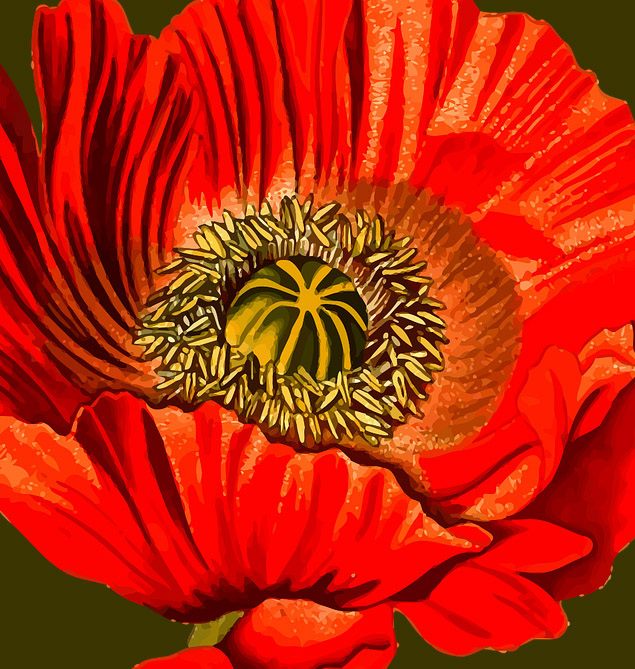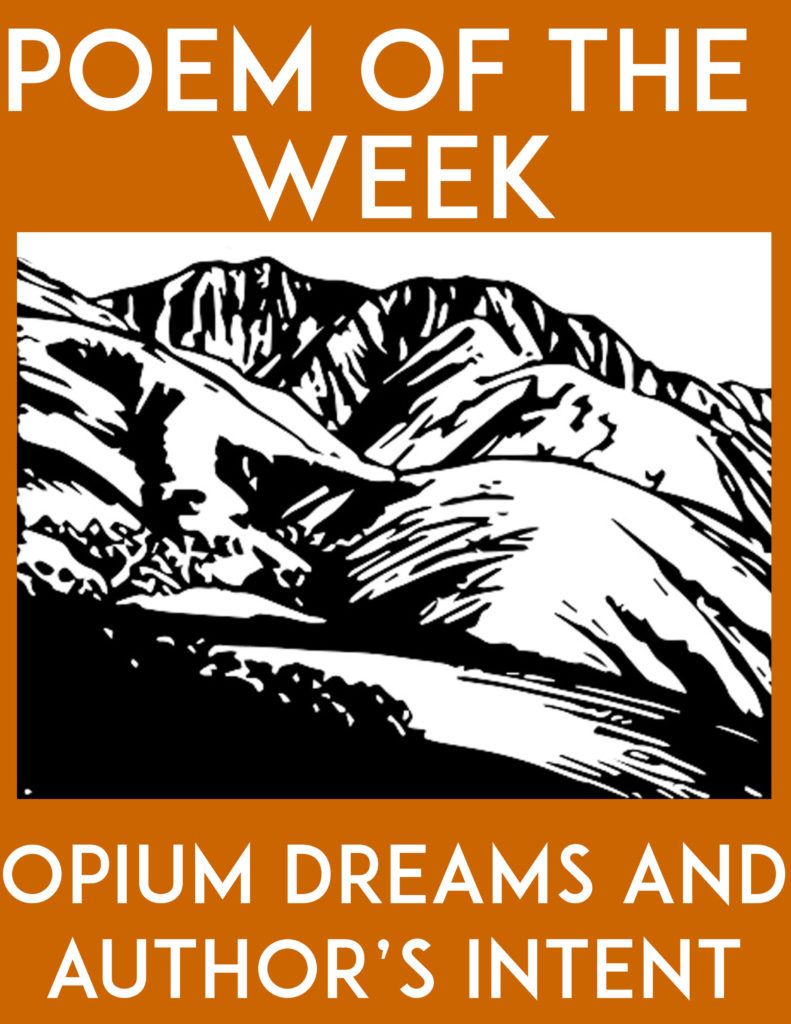Poem Of The Week: Opium Dreams and Author’s Intent

You know you have a good poetry lesson when it grabs students in the first days of school. One of my favorite and most effective poetry lessons of all time is my two-day lesson on Samuel Taylor Coleridge’s poem “Kubla Khan; or, A Vision in a Dream: A Fragment.” It’s a great lesson because I get to employ some of my favorite comprehension strategies, and because I get students writing and thinking about big questions early on. (You can find a ready-to-go version of the the lesson by clicking here.)

I start out the lesson by giving students a freewrite prompt about dreams. This is a great first freewrite as it is low pressure and everyone dreams. (It’s also a great freewrite to start the year with because it gives me the reminder to tell students to just start writing even if they think that they don’t remember their dreams. I’ve had many students who write “I don’t remember my dreams…” and within a half a sentence, they are already remembering their dreams.)
After that, we read the very short introduction to the poem, written by Coleridge. What I love about this part of the lesson is that the introduction is short, like a paragraph or so, and it is also sufficiently challenging. Short-but-difficult is a strategy that I’ll be following for most of the class, so it’s a good way to start off. In the introduction, Coleridge tells a story of falling asleep after having taken opium. While asleep, he sees the poem in its entirety. When he wakes up, he writes down what he can remember, but he is interrupted and then forgets the rest.
I take a few minutes at this point to talk to students about what they expect the poem to be like having read this intro. Students are often still a little shy, but as long as I keep asking them they usually come up with a few answers. Some say that the a poem inspired by an opium dream might be imaginative or original; some say that it might be confusing or jumbled, that it won’t make sense to anyone but the author. (In fact, they will all turn out to be correct.)
Then, after going over a few vocabulary words, we read the poem. It is not an easy poem—it’s long, somewhat confusing, and contains plenty of difficult words. But I’ve got a strategy for that too. I instruct students to choose five images to draw from the poem, and I tell them not to worry about what they don’t understand. It’s easy to convince them not to worry about the most confusing parts of the poem because honestly, this is a poem that no one fully understands.
Once they have drawn their five images, we come back to an all-class discussion, using some questions that I have written out in advance. First, I ask them if they believe Coleridge’s story about the opium dream and writing the poem in its entirety in a matter of minutes. Students usually say that since the poem is fairly confusing but also dreamlike in its imagery and originality, it probably was written that way.
We discuss the images that they have chosen, and then, by rereading specific lines, I get them to identify more poetic elements in the poem. They notice that the poem rhymes, and that it also contains alliteration. Now I ask them the question again: Do you believe Coleridge’s story about the opium dream? I add the additional question here of why would it be to a poet’s advantage for people to believe that his poem was written this way. Some students point out all of the poetic elements, and say that the poem wouldn’t rhyme or have alliteration if it were written the way that he says. Others point out that an author might like that story to be spread about his poem because it lets him off the hook in a way—it lowers expectations as people won’t think that the poem will make sense. It also helps make the poem more interesting when we know the story—another advantage for the author. There isn’t one correct answer obviously, and this is another reason why this poem makes such a great start to a class. I get to show my students that in my class, everyone’s opinions matter, that answers are probably going to be complicated, and that often there will be more than one truth.
To end the lesson, I give students a final freewrite on the topic of drugs or alcohol as inspiration. Most students know an artist, often a musician, who claims to be inspired by substance use. Most students also usually know of an artist who has been destroyed by substance abuse. We talk about both sides of the issue. I don’t deny that sometimes people find inspiration in drugs or alcohol, but I also point out all of the ways that those people usually end up ruining their lives. Ignoring one side of the issue wouldn’t convince students anyway, so I try to get them talking about it all.
What are your favorite poetry lessons? How do you get students talking about the effects of drugs and alcohol?